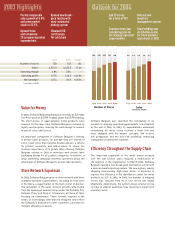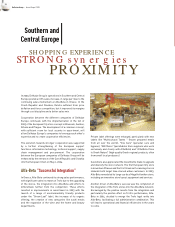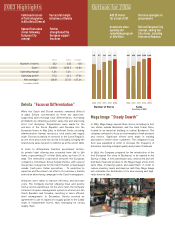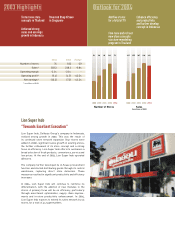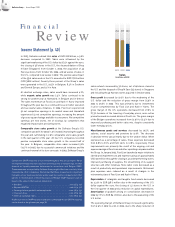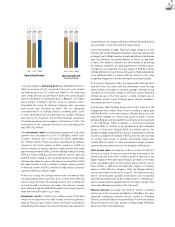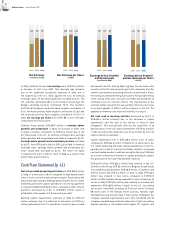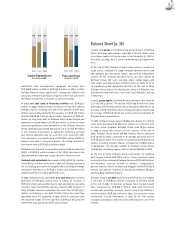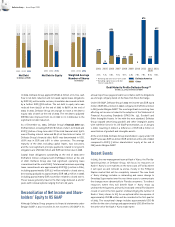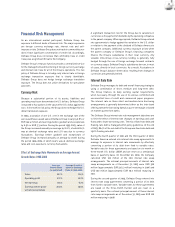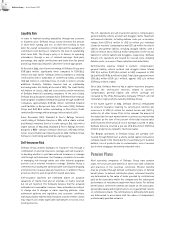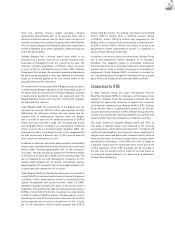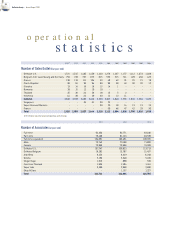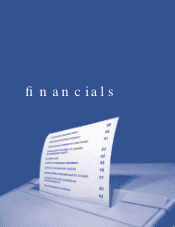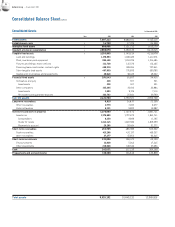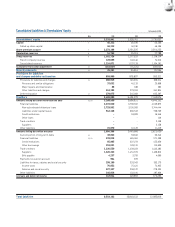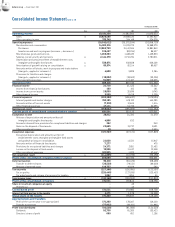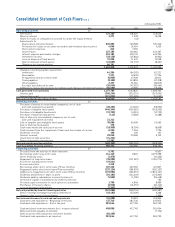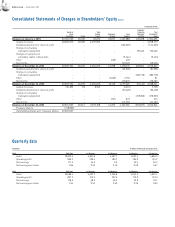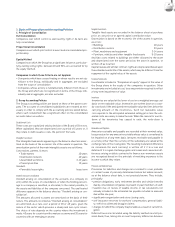Food Lion 2003 Annual Report Download - page 35
Download and view the complete annual report
Please find page 35 of the 2003 Food Lion annual report below. You can navigate through the pages in the report by either clicking on the pages listed below, or by using the keyword search tool below to find specific information within the annual report.
33
Financial Risk Management
As an international market participant, Delhaize Group has
exposure to different kinds of fi nancial risk. The major exposures
are foreign currency exchange rate, interest rate and self-
insurance risks. Delhaize Group does not trade in commodities nor
does it have signifi cant concentration of credit risk. Accordingly,
Delhaize Group does not believe that commodity risks or credit
risks pose a signifi cant threat to the Company.
Delhaize Group’s treasury function provides a centralized service
for the management and monitoring of foreign currency exchange
and interest rate risks for all of the Group’s operations. The risk
policy of Delhaize Group is to hedge only interest rate or foreign
exchange transaction exposure that is clearly identifi able.
Delhaize Group does not hedge foreign exchange translation
exposure. The Group does not utilize derivatives for speculative
purposes.
Currency Risk
Because a substantial portion of its assets, liabilities and
operating results are denominated in U.S. dollars, Delhaize Group
is exposed to fl uctuations in the value of the U.S. dollar against the
euro. In line with its risk policy, the Group does not hedge this U.S.
dollar translation exposure.
In 2003, a variation of one U.S. cent in the exchange rate of the
euro would have caused sales of Delhaize Group to vary by 0.8% or
EUR 155.5 million and earnings before goodwill and exceptionals
by 0.9% or EUR 3.3 million. During the period 1995-2003, sales of
the Group increased annually on average by 10.1%, of which 8.4%
was at identical exchange rates and 1.7% was due to currency
fl uctuations. Earnings before goodwill and exceptionals of
Delhaize Group increased annually on average by 20.9% during
the period 1995-2003, of which 19.5% was at identical exchange
rates and 1.4% was due to currency fl uctuations.
Effect of Exchange Rate Movements on Average Annual
Growth Rates 1995-2003
Average
Growth Rates
(as published)
Average Growth at
Identical Exchange
Rates in 1995-2003
Sales 10.1% 8.4%
Operating profit 12.2% 10.2%
Net earnings 8.5% 6.2%
Earnings before good-
will and exceptionals
20.9% 19.5%
A signifi cant transaction risk for the Group due to variations in
currencies is the payment of dividends by the operating companies
to the parent company. When appropriate, Delhaize Group entered
into agreements to hedge against the variation in the U.S. dollar
in relation to the payment of the dividend of Delhaize America to
the parent company. Additional currency exposure arises when
the parent company or Delhaize Group’s fi nancing companies
fi nance the Group’s subsidiaries in their local currency. Any
sizeable intra-Group cross-currency lending is generally fully
hedged through the use of foreign exchange forward contracts
or currency swaps. Delhaize Group’s subsidiaries borrow, in most
of cases, directly in local currencies. As a result, fl uctuations in
Delhaize Group’s balance sheet ratios resulting from changes in
currencies are generally limited.
Interest Rate Risk
Delhaize Group manages its debt and overall fi nancing strategies
using a combination of short, medium and long-term debt.
The Group fi nances its daily working capital requirements,
when necessary, through the use of its various committed and
uncommitted lines of credit and commercial paper programs.
The interest rate on these short and medium-term borrowing
arrangements is generally determined either as the inter-bank
offering rate at the borrowing date plus a pre-set margin or based
on market quotes from banks.
The Delhaize Group interest rate risk management objectives are
to limit the effect of interest rate changes on earnings and cash
fl ows and to lower borrowing costs. The mix of fi xed-rate debt and
fl oating-rate debt is managed within policy guidelines. At the end
of 2003, 80.4% of the net debt of the Group was fi xed-rate debt and
19.6% fl oating rate debt.
During the fourth quarter of 2001 and the third quarter of 2002,
Delhaize America entered into interest rate swap agreements to
manage its exposure to interest rate movements by effectively
converting a portion of its debt from fi xed to variable rates.
Variable rates for these agreements are based on six-month or
three-month U.S. dollar LIBOR and are reset on a semiannual
basis or quarterly basis. On December 30, 2003, the Company
cancelled USD 100 million of the 2011 interest rate swap
arrangements. The notional principal amounts of interest rate
swap arrangements as of December 31, 2003 were USD 300
million (approximately EUR 237.5 million) maturing in 2006 and
USD 100 million (approximately EUR 79.2 million) maturing in
2011.
During the second quarter of 2003, Delhaize Group entered into
interest rate swap agreements converting a portion of its debt
from fi xed to variable rates. Variable rates for these agreements
are based on the three-month Euribor and are reset on a
quarterly basis. The notional principal amount of these interest
rate swap arrangements as of December 31, 2003 was EUR 100
million maturing in 2008.


